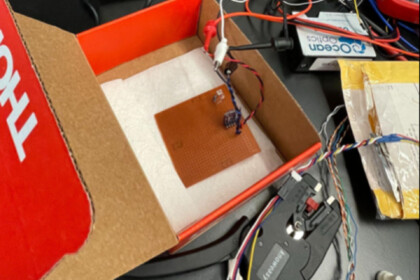
Projects & Materials

STEM UNIT: Building pH Sensors

This unit was created by Andrew Cozzens (Falmouth High School) for a high school Physics or Integrated Science class through his 2023 Teacher-in-Residence at the Autonomous Vehicles and Sensor Technology Lab at Woods Hole Oceanographic Institute (WHOI) in Woods Hole, Massachusetts.
Scientists and engineers at Woods Hole Oceanographic Institute work together to build sensors that measure key factors about the ocean, such as the acidification caused by dissolution of carbon dioxide in the water. Inspired by his week at the AVAST center, Mr. Cozzens sought to bring some of this interdisciplinary sensor technology to the classroom. In this unit, students build their understanding of pH, spectroscopy, and sensor technology by working in teams to create their own pH sensors.
Mr. Cozzens originally set out to create a unit where students build their own pH sensors, but realized that, thanks to scientists at University of Washington and publicsensors.org, a similar unit already existed. He decided to adapt this unit for his own classroom and the unique location of Cape Cod, including sharing more about the pH indicators used by scientists at WHOI, pH sensors developed at WHOI, and incorporating a field trip to WHOI where students share their sensors with local scientists.
This project could be used in a variety of STEM classes and incorporates chemistry, physics, environmental science, and engineering. The unit could be used after learning about spectroscopy, ocean acidification, or even acids and bases. Throughout this project, Mr. Cozzens hope that students gain a deeper understanding of the work happening right down the street from our school and how science and engineering are used to deepen our understanding of the world around us.